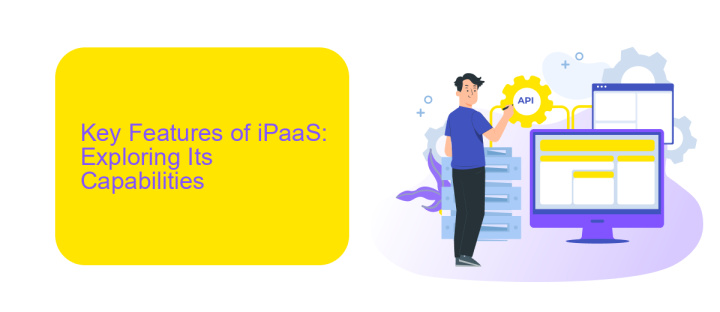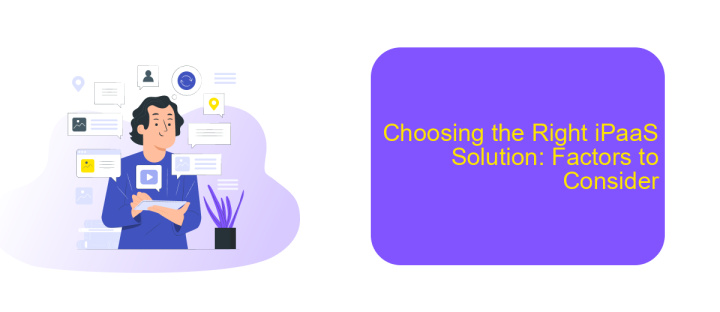iPaaS for Dummies
In today's rapidly evolving digital landscape, businesses are constantly seeking efficient ways to integrate various applications and data sources. Integration Platform as a Service (iPaaS) emerges as a powerful solution, simplifying the process of connecting disparate systems. This guide, "iPaaS for Dummies," aims to demystify the concept, providing you with the essential knowledge to leverage iPaaS for your organization's success.
Defining iPaaS: Understanding Its Purpose and Benefits
Integration Platform as a Service (iPaaS) is a cloud-based solution designed to streamline the process of integrating various applications and services within an organization. It provides a unified platform that simplifies data sharing, automates workflows, and enhances overall operational efficiency. By leveraging iPaaS, businesses can seamlessly connect disparate systems, ensuring smooth data flow and reducing manual intervention.
- Centralized management of integrations
- Scalability to accommodate growing business needs
- Real-time data synchronization
- Enhanced security and compliance
- Cost-effective solution compared to traditional integration methods
One notable example of an iPaaS solution is ApiX-Drive. This service allows users to easily set up integrations between various applications without requiring extensive technical knowledge. With ApiX-Drive, businesses can automate routine tasks, improve data accuracy, and foster better collaboration across different departments. By adopting iPaaS, organizations can achieve greater agility and responsiveness in today’s fast-paced digital landscape.
Key Features of iPaaS: Exploring Its Capabilities

iPaaS (Integration Platform as a Service) provides a robust suite of features designed to streamline and enhance integration processes. One of its key capabilities is the ability to connect disparate systems and applications, enabling seamless data flow across various platforms. This is particularly beneficial for businesses looking to automate workflows and reduce manual intervention. With iPaaS, users can easily set up and manage integrations without needing extensive coding knowledge, making it accessible to a broader range of users.
Another significant feature of iPaaS is its real-time data processing capabilities. This ensures that data is always up-to-date, which is crucial for maintaining accuracy and efficiency in business operations. Additionally, iPaaS platforms like ApiX-Drive offer pre-built connectors and templates, simplifying the integration process even further. These tools allow users to quickly link popular applications and services, enhancing productivity and operational efficiency. With robust security measures and scalability, iPaaS is a versatile solution for businesses of all sizes looking to optimize their integration strategies.
Benefits of iPaaS: Unlocking Efficiency and Connectivity

Implementing an Integration Platform as a Service (iPaaS) can revolutionize how businesses operate by enhancing efficiency and connectivity. iPaaS solutions streamline the integration of various applications and data sources, ensuring seamless communication and data flow across the organization. This not only reduces manual tasks but also minimizes the risk of errors, enabling teams to focus on more strategic initiatives.
- Automated Workflows: iPaaS automates repetitive tasks, reducing the need for manual intervention and increasing productivity.
- Real-time Data Sync: Ensures that all systems are updated in real-time, providing accurate and up-to-date information.
- Scalability: Easily scale operations by integrating new applications and services without significant overhead.
- Cost Efficiency: Reduces the need for custom integration solutions, saving both time and resources.
- Enhanced Connectivity: Tools like ApiX-Drive facilitate the seamless connection of various platforms, enhancing overall system integration.
By leveraging iPaaS, businesses can unlock new levels of efficiency and connectivity, leading to improved operational performance and better decision-making. The ability to integrate multiple systems effortlessly ensures that data flows smoothly across the organization, driving innovation and growth.
Choosing the Right iPaaS Solution: Factors to Consider

Choosing the right iPaaS solution is critical for streamlining your business processes and ensuring seamless integration across various platforms. The ideal iPaaS should align with your specific needs, offering flexibility, scalability, and ease of use.
First, evaluate the compatibility of the iPaaS with your existing systems. It's essential that the solution supports the applications and services you currently use, such as CRM, ERP, and other enterprise software. Additionally, consider the ease of integration and the level of technical expertise required.
- Scalability: Ensure the iPaaS can grow with your business and handle increasing data volumes.
- Customization: Look for solutions that offer customizable workflows and integration options.
- Security: Verify that the iPaaS adheres to industry security standards to protect your data.
- Cost: Assess the pricing model to ensure it fits within your budget while providing the necessary features.
- Support: Consider the level of customer support and resources available, such as ApiX-Drive, which offers extensive documentation and user-friendly interfaces for setting up integrations.
By carefully considering these factors, you can select an iPaaS solution that not only meets your current needs but also supports future growth and innovation. Investing time in this decision will pay off in improved efficiency and streamlined operations.
Implementing iPaaS: Best Practices and Considerations
When implementing iPaaS (Integration Platform as a Service), it is crucial to start with a comprehensive assessment of your current systems and integration needs. Identify key workflows and data exchange points that require seamless integration. Establish clear objectives and KPIs to measure the success of your iPaaS implementation. Choose an iPaaS solution that offers robust scalability, security, and real-time data processing capabilities. Ensure that the platform supports various integration patterns and protocols to accommodate diverse application environments.
One of the best practices is to leverage services like ApiX-Drive, which simplifies the integration process by providing pre-built connectors and automated workflows. ApiX-Drive allows you to connect multiple applications without extensive coding, making it easier to manage and monitor integrations. Additionally, prioritize data governance and compliance by setting up proper access controls and encryption methods. Regularly monitor and optimize your integrations to ensure they perform efficiently and align with evolving business needs. By following these best practices, you can maximize the benefits of iPaaS and drive seamless connectivity across your enterprise systems.


FAQ
What is iPaaS?
How does iPaaS work?
Who can benefit from using iPaaS?
What are some common use cases for iPaaS?
What should I look for in an iPaaS solution?
Apix-Drive will help optimize business processes, save you from a lot of routine tasks and unnecessary costs for automation, attracting additional specialists. Try setting up a free test connection with ApiX-Drive and see for yourself. Now you have to think about where to invest the freed time and money!

